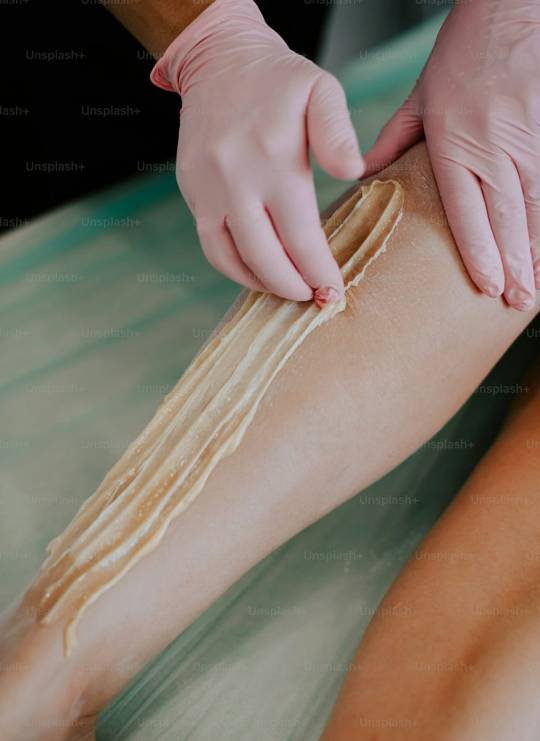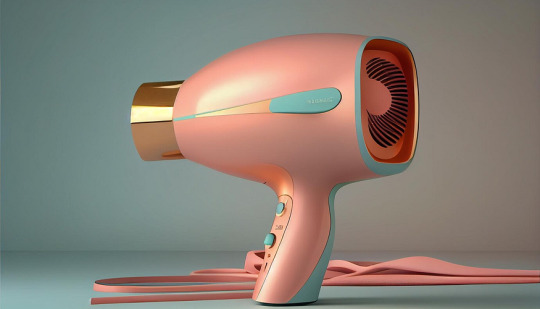#fdaapproved
Text
🎯 Understanding Tapentadol's Pain Relief Power

Tapentadol, a potent opioid analgesic, uniquely blends μ-opioid receptor (MOR) agonism and noradrenaline reuptake inhibition (NRI) in one formula. Its dual action kicks in within just 30 minutes, swiftly combating acute and chronic pain.
🔍 Dive into Tapentadol's Mechanism:
Tapentadol's dual action binds to opioid receptors, slashing pain sensation, while also tweaking norepinephrine levels to ease stress and uplift mood.
💊 Pharmacokinetics & Dynamics:
Tapentadol swiftly absorbs post-administration, achieving steady plasma levels in 25-30 hours. Metabolized in the liver, it's mainly excreted via urine, with a half-life of 3.93 hours (immediate-release) to 4.4-5.9 hours (extended-release).
⏰ Say Goodbye to Pain:
It takes about 20-24 hours to flush out Tapentadol IR and 1.5 days for ER, ensuring efficient pain management.
🔄 Synergistic Action Unveiled:
Studies show Tapentadol's pain-relieving prowess, with both MOR agonism and NRI working hand in hand, as synergistic allies.
💡 Clinical Benefits:
FDA-approved for acute and chronic pain, Tapentadol boasts high tolerability and a safer profile than traditional opioids, with fewer GI side effects.
#Tapentadol#PainRelief#ChronicPain#Opioid#Healthcare#Medication#Pharmacology#PainManagement#Wellness#HealthTips#DrugSafety#FDAApproved#Pharma#ChronicIllness#Analgesic#MentalHealth#NeuropathicPain#DrugInfo#PatientCare#MedicalResearch
0 notes
Text

Health Conditions Understanding: A Guide to Your Well-Being
Navigating the world of health information can be overwhelming.
With a vast array of health conditions existing, understanding them and their impact on our lives is crucial. This article serves as a guide, unpacking the different types of health conditions, exploring risk factors and prevention strategies, and emphasizing the importance of early diagnosis and treatment. Read More...
#healthconditions#health#healthcare#weightloss#healthyliving#diabetes#healthproblems#detox#chocolatedrink#healthychocolatedrink#healthsolution#completehealthbenefits#slimming#antioxidant#perfecthealthpartner#bodyrehab#bodyrehabpowermix#naturalhealer#betterlife#healthybody#overallhealth#effective#safe#fdaapproved#naturalhealthsupplement#glowingskin#naturaldrink#superfoods#antiaging#nutritionalsupplementdrink
1 note
·
View note
Text
Can You Wax Before Laser Hair Removal? Everything You Need to Know
Laser hair removal has gained immense popularity in recent years for its effectiveness in reducing unwanted hair. However, many people wonder whether they can wax before undergoing laser hair removal treatments. In this comprehensive guide, we’ll delve into the intricacies of waxing before laser hair removal in the USA, addressing common concerns and providing valuable insights.

Understanding Laser Hair Removal:
Before delving into the question of whether waxing is compatible with laser hair removal, let’s briefly understand how laser hair removal works. This cosmetic procedure employs concentrated beams of light to pinpoint and eradicate hair follicles, thereby impeding future hair growth. It’s a precise and long-lasting solution for reducing unwanted hair on various parts of the body.
Can You Wax Before Laser Hair Removal?
The big question remains: can you wax before laser hair removal? The short answer is no. While it’s tempting to resort to waxing as a quick fix for hair removal before laser treatments, it’s not advisable. Waxing removes hair from the root, which is essential for successful laser hair removal. Without the hair follicle intact, the laser cannot effectively target it during the treatment.
Why You Should Avoid Waxing Before Laser Hair Removal:
Interference with the Hair Growth Cycle: Laser hair removal targets the hair follicles during their active growth phase (anagen phase). Waxing disrupts this cycle by removing the hair follicle altogether, making it challenging for the laser to identify and treat the hair effectively.
Increased Risk of Complications: Waxing can irritate the skin and cause redness, inflammation, or even burns, especially when followed by laser treatment. Combining these two hair removal methods can heighten the risk of adverse reactions and compromise the outcome of laser hair removal.
Inconsistent Results: Waxing before laser hair removal can lead to inconsistent results. Some areas may have partial regrowth, while others may be completely devoid of hair, making it difficult for the laser technician to achieve uniformity during the treatment sessions.

Alternatives to Waxing Before Laser Hair Removal:
If waxing is off the table before laser hair removal, what are the alternatives? Here are some hair removal methods that are compatible with laser treatments:
Shaving: Unlike waxing, shaving doesn’t remove the hair follicle from the root, making it a suitable option before laser hair removal. However, be sure to shave the treatment area 24 to 48 hours before your laser session to allow any skin irritation to subside.
Depilatory Creams: Depilatory creams dissolve the hair just below the skin’s surface, leaving the hair follicle intact. They can be used as an alternative to waxing before laser hair removal, but it’s essential to follow the manufacturer’s instructions and perform a patch test to avoid adverse reactions.
Trimming: Trimming the hair with scissors or an electric trimmer is another safe option before laser hair removal. This method allows you to maintain the length of the hair while ensuring that the follicles remain intact for effective laser treatment.
1. Can I Wax Before Laser Hair Removal?
No, it is not advisable to wax before laser hair removal. Waxing removes hair from the root, which interferes with the effectiveness of laser treatment as it requires the hair follicle to be intact for targeting.
2. Why is Waxing Before Laser Hair Removal Not Recommended?
Waxing disrupts the natural hair growth cycle and removes the hair follicle, making it difficult for the laser to identify and treat the hair effectively. This can lead to inconsistent results and increased risk of complications.

3. What Happens if I Wax Before Laser Hair Removal?
Waxing before laser hair removal can result in incomplete treatment, as the laser may not be able to target the hair follicles effectively. It can also increase the risk of skin irritation, burns, and other adverse reactions.
4. Are There Any Alternatives to Waxing Before Laser Hair Removal?
Yes, there are several alternatives to waxing before laser hair removal, including shaving, depilatory creams, and trimming. These methods do not remove the hair follicle and are compatible with laser treatment.
5. Can I Shave Before Laser Hair Removal?
Yes, shaving is a suitable alternative to waxing before laser hair removal. It removes the hair above the surface of the skin while leaving the follicle intact, allowing for effective laser treatment.
6. How Soon Before Laser Hair Removal Should I Shave?
It is recommended to shave the treatment area 24 to 48 hours before your laser session. This allows any skin irritation from shaving to subside before undergoing laser treatment.

7. Can I Use Depilatory Creams Before Laser Hair Removal?
Depilatory creams dissolve the hair just below the skin’s surface, leaving the follicle intact. They can be used as an alternative to waxing before laser hair removal, but it’s important to follow the manufacturer’s instructions and perform a patch test to avoid adverse reactions.
8. Is Trimming Before Laser Hair Removal Effective?
Trimming the hair with scissors or an electric trimmer is another safe option before laser hair removal. This method allows you to maintain the length of the hair while ensuring that the follicles remain intact for effective laser treatment.
9. Will Waxing After Laser Hair Removal Affect the Results?
It is typically advised to refrain from waxing following laser hair removal, as it may disturb the natural hair growth cycle and compromise the treatment’s efficacy. Consult with your dermatologist or laser technician for personalized advice.
10. How Many Laser Hair Removal Sessions Will I Need?
The number of laser hair removal sessions needed varies depending on factors such as hair color, skin type, and treatment area. On average, most individuals require multiple sessions spaced several weeks apart to achieve optimal results.
CLICK HERE for Tired of Waxing? Experience Effortless Smoothness with These 10 Permanent Hair Removal Creams
Conclusion:
In conclusion, while the temptation to wax before laser hair removal may be strong, it’s best to avoid it to ensure optimal results and minimize the risk of complications. Instead, opt for hair removal methods such as shaving, depilatory creams, or trimming, which are compatible with laser treatments. By adhering to these guidelines, you can maximize the effectiveness of your laser hair removal sessions and achieve smoother, hair-free skin in the long run. Remember, consistency and patience are key to successful laser hair removal outcomes.
CLICK HERE for Make Waxing a Thing of the Past! Revolutionize Your Routine with These 6 Permanent Hair Removal Creams
When considering whether you can wax before laser hair removal in the USA, it’s essential to prioritize the effectiveness and safety of your treatment. While waxing might seem like a convenient option for hair removal, it can interfere with the laser’s ability to target hair follicles effectively. This interference can lead to inconsistent results and potentially increase the risk of adverse reactions. Instead, opting for alternative hair removal methods like shaving, depilatory creams, or trimming ensures that the hair follicles remain intact, allowing the laser to target them accurately during treatment sessions. By adhering to these guidelines and consulting with a qualified laser technician, you can optimize the outcomes of your laser hair removal journey, achieving smoother, long-lasting results while prioritizing your skin’s health and safety. Trusting in the expertise of professionals and following their recommendations will help you navigate the process with confidence and achieve your desired hair removal goals effectively.
#laserhairremoval#hairremoval#laser#permanenthairremoval#hair#beauty#skincare#cosmetics#treatment#clinic#doctor#esthetician#painless#affordable#effective#safe#comfortable#convenient#quick#easy#resultsguaranteed#nosideeffects#fdaapproved#clearedbythefda
0 notes
Photo

Discover safe and effective options backed by the FDA to help you achieve your fitness goals. From understanding mechanisms to dosages and potential benefits, we've got you covered. (via Your Ultimate Guide to FDA-Approved Weight Loss Medications - ArticleTed - News and Articles)
1 note
·
View note
Text
#Omalizumab#AsthmaTreatment#SevereAsthma#MonoclonalAntibody#Aeroallergen#InhaledCorticosteroids#FDAApproved#PediatricAsthma#RespiratoryHealth#theindianpharma#raredisease
0 notes
Text
Scientific Revolution or Something Else?
So many new medications are flooding the market, this should be commensurate with increased health outcomes, but is it? #healthandwellness #medication #health #bigpharma #moneymatters #fda #fdaapproved
youtube
View On WordPress
0 notes
Link
🐾 Fleas and ticks can wreak havoc on your pet's health, causing skin irritation, anemia, and even transmitting diseases. That's why it's crucial to protect your furry friend from these pests. Luckily, there are many FDA-approved treatments available on the market. 🐾 It's important to choose a treatment that suits your pet's needs and lifestyle, as well as following the instructions carefully. Some treatments are topical, while others are oral, and some even come in collars or sprays. The right treatment can help keep your pet safe and healthy. 🐾 Don't let fleas and ticks put your pet's health at risk. With so many safe and effective treatments available, there's no excuse not to protect your furry friend. Keep reading to learn more about FDA-approved flea and tick treatments and how they can benefit your pet.1. Introduction: Understanding the Importance of FDA Approved Flea & Tick Treatments for Your PetFlea and tick treatments are essential for your pet's health and well-being. 🐶🐱 FDA approval ensures that the product has undergone rigorous testing and is safe for use. 💊 Unapproved treatments can cause adverse reactions, and some may even be deadly. ☠️ It's crucial to always use FDA-approved flea and tick treatments to keep your pet healthy. 🐕🐈 The FDA regulates pet products, including flea and tick treatments. 📝 FDA-approved products are tested for safety and effectiveness, ensuring you're getting a quality product. 💯 This protects your pet from harmful chemicals or untested remedies. 🚫 Always look for the FDA approval label before purchasing any flea and tick treatment. 🏷️ Using an FDA-approved treatment means you're taking an active role in your pet's health. 💪 It guarantees your pet's safety and allows them to live a happy and healthy life. 🥰 Non-approved treatments can be risky and harmful, leading to vet bills and unnecessary suffering. 💸 Make sure you're always using an FDA-approved treatment to keep your pet safe. 🛡️ In conclusion, using an FDA-approved flea and tick treatment is vital for your pet's health. 🐾 It ensures safety, effectiveness, and quality. 🌟 Don't risk your pet's well-being by using unapproved remedies. 🚫 Always look for the FDA approval label and keep your furry friend healthy and happy. 😊2. Common Flea & Tick Infestations: Knowing the Signs and SymptomsKnowing the signs and symptoms of common flea and tick infestations is crucial in protecting your furry friends. These pests can cause serious health issues. Common signs of fleas include excessive scratching, hair loss, and flea dirt on the skin. Ticks can cause lethargy, fever, and loss of appetite. They're often found around the ears, between toes, and in the groin area. Prevention is always better than cure. Use flea and tick preventatives as recommended by your vet. Regular grooming and vacuuming also help keep these pests at bay. When treating an infestation, use products specifically designed for your pet's size and weight. Consult with your vet before using any products, especially if your furry friend has any underlying health conditions. Be vigilant and check your pet regularly for fleas and ticks, especially after spending time outdoors. Early detection and treatment are key in preventing serious health issues. Always check yourself and your family members for ticks after being outdoors. Removing ticks as soon as possible reduces the risk of disease transmission. Remember, prevention and early detection are crucial in protecting your furry friends from the harmful effects of flea and tick infestations. Stay informed and take action to keep your pets happy and healthy!3. The Role of FDA Approval in Ensuring the Safety and Effectiveness of Flea & Tick TreatmentsFDA approval is crucial in ensuring flea & tick treatments are safe and effective. The FDA assesses the product's active ingredients, dosage, and potential side effects. Products containing unsafe ingredients are rejected. Those that meet safety standards are approved for sale. Approval also means the product's claims of efficacy have been evaluated for accuracy. It's important to choose FDA-approved products for your pet's safety. Unapproved products could contain harmful substances. They could also be ineffective, putting your pet at risk of flea and tick infestations. Before using any flea & tick treatment, check the label for the FDA approval statement. Remember that prevention is always better than treatment. Consult with a veterinarian for the best options. 🐾4. Types of FDA Approved Flea & Tick Treatments: Comparing Topical, Oral, and Collar OptionsThere are three main types of FDA approved flea and tick treatments: topical, oral, and collar options. Each has its own advantages and disadvantages. Topical treatments: Applied to the skin, they kill fleas and ticks on contact. They can be messy and need to be applied monthly. Oral treatments: Given in pill or chewable form, they kill fleas and ticks from the inside out. They can be more convenient than topicals. Collar treatments: Worn around the neck, they release chemicals that kill fleas and ticks. They can be effective for up to eight months. If you have a dog or cat, it's important to choose a flea and tick treatment that suits their lifestyle and needs. Consider factors like age, weight, and any health conditions they may have. Topical treatments like Frontline Plus and Advantage II are popular because they're easy to apply and fast-acting. However, they can be messy and leave an oily residue. Oral treatments like NexGard and Bravecto are convenient and long-lasting, but they require a prescription. Collar treatments like Seresto and Scalibor can be effective for up to eight months, making them a good option for busy pet owners. Whichever type of treatment you choose, make sure to follow the instructions carefully. Apply or administer as directed, and monitor your pet for any adverse reactions. With the right flea and tick treatment, you can help keep your furry friend healthy and happy. 🐶🐱5. Tips for Choosing the Best FDA Approved Flea & Tick Treatment for Your PetWhen it comes to choosing the best FDA approved flea & tick treatment for your pet, there are a few tips to keep in mind. Firstly, consider your pet's age, weight, and any pre-existing health conditions. Secondly, research the different types of treatments available, such as topical, oral, or collars. Thirdly, read product labels carefully to ensure they are FDA approved and safe for your pet. Fourthly, consider the effectiveness of the treatment and its duration. Finally, consult with your veterinarian for their recommendations and advice on the best option for your pet. 6. Proper Application and Follow-Up: Maximizing the Benefits of FDA Approved Flea & Tick TreatmentsProper application of FDA approved flea & tick treatments is crucial for effectiveness. Read the label carefully and follow instructions. Apply directly on the skin, not the fur. Use the recommended amount for your pet's weight. Apply in a well-ventilated area. Follow-up is equally important to ensure continued protection. Reapply as directed, usually every 30 days. Monitor for any adverse reactions. Check for fleas and ticks regularly. Consult your vet if issues persist. Maximize the benefits of flea & tick treatments by maintaining a clean environment. Wash bedding and vacuum regularly. Limit outdoor exposure. Use flea/tick prevention in the home. Use flea/tick prevention on other pets in the household. Remember, FDA approved flea & tick treatments are safe and effective when used correctly. Don't use expired products. Don't combine different treatments without consulting your vet. Don't use dog products on cats or vice versa. Don't hesitate to ask your vet for advice. By following these guidelines, you can protect your pet from fleas and ticks and keep them healthy and happy.🐾7. Conclusion: Protecting Your Pet with Reliable and Safe FDA Approved Flea & Tick TreatmentsProtecting your furry friend from fleas and ticks is crucial to their health and wellbeing. With the abundance of flea and tick treatments available on the market, it's important to choose a reliable and safe option that's FDA approved. 🐶🐱 🛡️ 🌱 Reliable flea and tick treatments offer a long-lasting solution to keep your pet safe. These treatments are designed to kill fleas and ticks on contact, protecting your pet from infestations and the diseases that these pests can carry. 🕷️🦟 🚫 💪 When choosing a flea and tick treatment, it's important to look for FDA approval. This ensures that the product has undergone rigorous testing to ensure its safety and efficacy in combating fleas and ticks. 🔬 ✅ 💊 It's also important to choose a treatment that is safe for your pet. Look for treatments that are made with natural ingredients and avoid those containing harsh chemicals that can harm your pet and the environment. 🌿 🚫🧪 🌍 Regular use of a reliable and safe flea and tick treatment is an important part of your pet's healthcare routine. By protecting your pet from fleas and ticks, you're ensuring that they stay healthy and happy for years to come. 👍 🐾 🎉 In conclusion, FDA approved flea and tick treatments are crucial for protecting your beloved pet from harmful pests. These treatments are safe, effective, and readily available in the market. Choose the one that best suits your pet's needs and make sure to follow the instructions carefully. Don't wait until your pet suffers from flea and tick infestations. Take action now and invest in a reliable treatment option. With FDA approved products, you can have peace of mind knowing that your furry friend is protected from harmful parasites. So, say goodbye to fleas and ticks and hello to a happy and healthy pet! 🐾 https://fleatreatment.uk/fda-approved-flea-tick-treatments-protect-your-pet/?_unique_id=6456f508934b3
#Uncategorised#FDAapproved#fleaandticktreatments#PetProtection#safeandeffective#veterinaryrecommended#aiomatic_0
0 notes
Text
🎉 Transforming Lives with TMS: Our Clinic Featured on ABC-7's Be Mindful Series 🎉
🌟 Exciting News! 🌟 Our clinic has been featured in ABC-7’s Be Mindful series, showcasing the incredible impact of Transcranial Magnetic Stimulation (TMS) treatment on patients struggling with anxiety and depression. Watch the Video and Read More.
🧠 TMS, an FDA-approved technology, uses magnetic pulses to stimulate the frontal lobe and helps neurons function properly. This innovative treatment…

View On WordPress
#ABC7#Anxiety#BeMindful#BrainHealth#BreakthroughTreatment#ClinicFeature#Depression#ElPaso#FDAApproved#Happiness#Healing#Healthcare#Hope#Innovation#Inspiration#InsuranceCoverage#LifeChanging#MentalHealth#MentalHealthAwareness#Mindfulness#Neuroscience#PersonalGrowth#Recovery#SelfImprovement#SuccessStories#Support#TMS#TranscranialMagneticStimulation#Transformation#Wellness
0 notes
Photo

You have likely heard the terms FDA Cleared and FDA Approved, but did you know there’s a big difference between these two sound-alikes? And what does Emergency Use Authorization mean? The scope of The FDA is very broad, and to add to the confusion, FDA regulations can overlap with those of other government agencies.
Today's San Francisco Plastic Surgery Blog reviews FDA Clearance and Approval, and lets you know which terms to avoid altogether.
https://www.sanfranciscoplasticsurgeryblog.com/fda-cleared-vs-fda-approved-whats-the-dif
#fda#fdaapproved#fdacleared#plastic surgery#plastic surgeon#cosmetic surgery#cosmetic surgeon#cosmetic plastic surgery#aesthetic surgery#aesthetic surgeon#drmele#patient safety
0 notes
Photo

THE LEGEN-DAIRY COMEBACK OF THE FIRST MILK SOAP THAT YOU'VED LOVED! 😍 "First time using it it was Pretty good. Fragrance is AMBANGOO!! GRABEEE AMOY GATAS!!! GUSTO KO TULOY KAININ HUHU LOVE IT. Texture It wass smoothie. FIRST time using this soap apaka bango and it was mild soap will order again hihi." ADD TO CART OUR MILKY BAR SOAP FOR ONLY PHP100! 🛒 #FairyskinMilkyBarSoap #FairyskinLegenDairy #KoreanskinWithFairyskin #FdaApproved #BestsellerSince2017 #ChooseFairyskin ✨ 🧚♀️ 𝐎𝐑𝐃𝐄𝐑 𝐇𝐄𝐑𝐄 👇👇👇 Shopee: 🛒 shp.ee/84swtpt Lazada: 🛒 https://s.lazada.com.ph/s.fT35V Tiktok Shop: tiktok.com/@fairyskinmainofficial https://www.instagram.com/p/ChWvWGtuDOJ/?igshid=NGJjMDIxMWI=
#fairyskinmilkybarsoap#fairyskinlegendairy#koreanskinwithfairyskin#fdaapproved#bestsellersince2017#choosefairyskin
0 notes
Text

Soma, also known as carisoprodol, is a medication that is primarily used to treat muscle pain and discomfort. While it is not indicated for the treatment of anxiety, some people may find that it has a calming effect that can help to alleviate their anxiety symptoms.
However, it is important to note that Soma can also be habit-forming and has the potential for abuse and addiction. It should only be taken as directed by a healthcare provider and should not be used as a long-term solution for anxiety.
There are many other medications and treatments available for anxiety that have been specifically approved by the FDA for this purpose, such as antidepressants, benzodiazepines, and therapy. It is important to work with a healthcare professional to determine the most appropriate treatment plan for your individual needs.
#Soma#Carisoprodol#MusclePain#AnxietyTreatment#CalmingEffect#HabitForming#Addiction#FDAApproved#Antidepressants#Benzodiazepines#Therapy#MentalHealth#HealthcareProfessional#TreatmentPlan#Alternatives#SafeAndEffective#PrescriptionDrug#DrugAbuse#LongTermSolution#Wellness#StressManagement#Mindfulness#SelfCare#HealthyHabits#PositiveChange#HealthyLiving#MentalWellness#AnxietySupport#MentalHealthAwareness#AnxietyHelp
1 note
·
View note
Text
#beautyhacks#skin treatment#lgbtq#skin#beauty innovations#health & fitness#self care#skin products#skin protection#beauty#skincare#acne prevention tips#how to treat acne#rosacea#antiaging#wrinkle removal#remove wrinkles#ledtherapy#fdaapproved
1 note
·
View note
Text
Dermatologists Recommended At-Home Laser Hair Removal USA: The Ultimate Guide
In the pursuit of smooth, hair-free skin, many individuals turn to laser hair removal. Initially, this option was limited to dermatologist offices or specialized clinics. However, advancements in technology have sparked the rise of at-home laser hair removal devices. Yet, the question remains: do they match the effectiveness and safety of professional treatments? This comprehensive guide delves into the world of at-home laser hair removal, with a focus on dermatologists’ recommendations and its accessibility in the USA.

Understanding At-Home Laser Hair Removal:
At-home laser hair removal devices harness the same technology as professional systems but are tailored for consumer use. These devices emit light energy absorbed by the hair follicle’s pigment, ultimately hindering hair regrowth. While resembling professional treatments, at-home devices typically operate at lower energy levels to ensure user safety.
Dermatologists Recommended At-Home Laser Hair Removal:
A pivotal aspect in selecting an at-home laser hair removal device lies in dermatologists’ endorsements. Dermatologists, experts in skin health, provide invaluable insights into treatment safety and efficacy.
For at-home laser hair removal, dermatologists advocate for FDA-cleared devices. FDA clearance guarantees thorough testing for safety and effectiveness. Additionally, dermatologists favor devices with integrated safety features like skin tone sensors and adjustable energy levels to mitigate risks.
In the USA, several at-home laser hair removal brands come highly recommended by dermatologists, including Tria Beauty, Philips Lumea, and Silk’n. These brands offer diverse devices tailored to various skin tones and hair types, ensuring suitability for a wide range of consumer needs.

Considerations to Keep in Mind When Selecting an At-Home Laser Hair Removal Device:
Before making a purchase, it’s essential to consider various factors to make an informed decision:
Skin Tone Compatibility: Ensure the device is suitable for your skin tone, as some may not be compatible due to pigment variations.
Hair Color: Verify the device’s effectiveness for your hair color, as efficacy varies with different hair colors.
Treatment Area: Assess whether the device is suitable for your intended treatment area, whether it’s facial or larger body parts.
Safety Features: Prioritize devices with safety features like skin tone sensors and adjustable energy levels to minimize adverse effects.

Benefits of At-Home Laser Hair Removal:
Opting for at-home laser hair removal presents several advantages over professional treatments:
Convenience: Treatments can be conveniently performed at home, eliminating the need for appointments or travel.
Cost-Effectiveness: While the initial investment may be higher, the long-term savings compared to salon visits are substantial.
Privacy: Conducting treatments at home offers a level of privacy preferred by some individuals over clinical settings.
Long-Term Results: With consistent use, at-home devices deliver long-term hair reduction, leading to smoother skin and reduced irritation.

Guidelines for Ensuring Safe and Efficient At-Home Laser Hair Removal:
To ensure the best possible results and minimize the risk of adverse effects, follow these tips for safe and effective at-home laser hair removal:
Read the Instructions: Before using your at-home laser hair removal device, carefully read the manufacturer’s instructions and follow all recommended guidelines for use.
Perform a Patch Test: Before treating a larger area, perform a patch test on a small area of skin to ensure that you do not experience any adverse reactions.
Be Consistent: For optimal results, follow a consistent treatment schedule as recommended by the manufacturer. This typically involves multiple treatments spaced several weeks apart to target hair in different stages of the growth cycle.
Protect Your Skin: After each treatment, be sure to apply sunscreen to protect your skin from potential sun damage. Avoid sun exposure for at least 24 hours after treatment to reduce the risk of hyperpigmentation.

FAQs on Dermatologist Recommended At-Home Laser Hair Removal (USA):
Q: Are at-home laser hair removal devices as effective as professional treatments recommended by dermatologists?
A: At-home laser hair removal devices can be effective when used correctly and consistently over time. While they may not offer the same intensity as professional treatments, many dermatologists recommend FDA-cleared at-home devices for long-term hair reduction. It’s important to follow the manufacturer’s guidelines and be patient with results, as multiple treatments may be necessary for optimal efficacy.
Q: Are at-home laser hair removal devices safe for all skin types?
A: Most at-home laser hair removal devices are designed to be safe for a range of skin tones, but it’s crucial to choose a device that is suitable for your specific skin type. Dermatologists recommend devices with built-in safety features such as skin tone sensors to minimize the risk of adverse effects, especially for individuals with darker skin tones.
Q: What is the duration for noticing results with at-home laser hair removal?
A: Results with at-home laser hair removal vary depending on factors such as hair color, skin tone, and the individual’s response to treatment. While some users may notice a reduction in hair growth after just a few sessions, it typically takes several treatments spaced several weeks apart to achieve significant and long-lasting results. Consistency is key to seeing the best outcome.
CLICK HERE for Discover Your Smoothest Skin Ever: A Detailed Review of the Best Permanent Hair Removal Creams
Q: Are there any side effects or risks associated with at-home laser hair removal?
A: When used properly, at-home laser hair removal devices are generally safe and well-tolerated. However, some users may experience temporary side effects such as redness, swelling, or mild discomfort during or after treatment. Typically, these side effects diminish within a span of a few hours to several days. It’s essential to follow all safety precautions and avoid using the device on irritated or broken skin to minimize the risk of adverse reactions.
Q: Can at-home laser hair removal devices be used on all areas of the body?
A: At-home laser hair removal devices can be used on most areas of the body, including the legs, arms, underarms, bikini line, and face. However, it’s essential to choose a device that is specifically designed for the area you wish to treat, as some devices may not be suitable for delicate areas such as the face or bikini line. Additionally, users should avoid using the device near the eyes or on areas with tattoos or moles.
Conclusion:
At-home laser hair removal offers a convenient and effective solution for achieving smooth, hair-free skin without the need for professional treatments. By choosing a device recommended by dermatologists and following best practices for safe and effective use, you can enjoy long-lasting results from the comfort of your own home. With the availability of FDA-cleared devices from trusted brands, at-home laser hair removal has never been more accessible for consumers in the USA. Say goodbye to unwanted hair and hello to silky-smooth skin with dermatologists recommended at-home laser hair removal.
CLICK HERE for Say Farewell to Unwanted Hair: Dive into the Top 10 Permanent Hair Removal Creams
Dermatologists advocate for at-home laser hair removal as a practical and accessible method for individuals seeking lasting hair reduction in the USA. With FDA-approved devices offered by reputable brands, consumers can now conveniently achieve smooth, hair-free skin in the comfort of their own homes. By following recommended usage protocols and maintaining consistent treatment schedules, users can enhance results while minimizing potential risks. Although at-home devices may not replicate the intensity of professional treatments, they serve as a viable option for those valuing convenience and cost-effectiveness. Dermatologists stress the importance of selecting devices with tailored safety features suited to various skin types to ensure a personalized and secure treatment experience. The increasing popularity of at-home laser hair removal underscores the importance of making informed choices guided by professional advice. Ultimately, with endorsements from dermatologists and advancements in technology, at-home laser hair removal presents a promising avenue for achieving enduring hair reduction and embracing smoother skin with confidence.
#laserhairremoval#hairremoval#laser#permanenthairremoval#hair#beauty#skincare#cosmetics#treatment#clinic#doctor#esthetician#painless#affordable#effective#safe#comfortable#convenient#quick#easy#resultsguaranteed#nosideeffects#fdaapproved#clearedbythefda
0 notes
Text
Homemade pudding mix
Avoid buying pudding mix. Watch the video,
and you will understand why.
2 notes
·
View notes